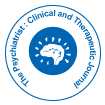开放获取期刊获得更多读者和引用
700 种期刊 和 15,000,000 名读者 每份期刊 获得 25,000 多名读者
抽象的
In the Treatment of Schizophrenia and Depression, New Atypical Antipsychotics
Julianne Pelegrino
Depression and schizophrenia are distinct mental illnesses.Due to the intricate pathomechanisms of the diseases, patients may respond differently to medication.Although there are numerous psychotropic medications on the market, achieving the best therapeutic effect can be difficult.New atypical antipsychotic medications may be effective against the affective symptoms of depression as well as the negative and cognitive symptoms of schizophrenia based on their strong correlation with clinical observations.Aripiprazole, cariprazine, lurasidone, asenapine, brexpiprazole, lumateperone, and pimavanserin—new antipsychotics of the second and third generations—are used to treat depression and schizophrenia. The purpose of this review is to provide background information as well as evidence for these medications.We have initially briefly discussed the major neurobiological causes of schizophrenia and depression. The benefits, drawbacks, and dangers of continuing pharmacotherapy for depression and schizophrenia are then briefly discussed.The primary focus of this review was on the current therapeutic potential of new atypical antipsychotic medications for the treatment of psychotic and affective disorders.

 English
English  Spanish
Spanish  Russian
Russian  German
German  French
French  Japanese
Japanese  Portuguese
Portuguese  Hindi
Hindi